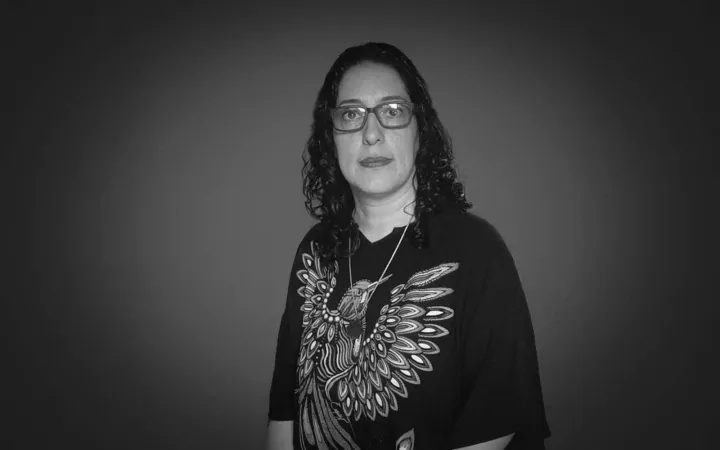
Por Valeria Villa

Para bien y para mal, se puso de moda ir a terapia y hablar públicamente de la enfermedad mental. Para bien, porque el estigma ha sido enorme y nadie quería que los demás pensaran que estaba loca solo por ir al psicólogo. Para bien porque nadie debería sentir vergüenza por atravesar una depresión, padecer ansiedad generalizada o un trastorno de la conducta alimentaria.
Para mal, porque decir voy a terapia no es garantía de recuperación ni de que el tipo de terapia sea realmente útil para trabajar el motivo de consulta. En mi experiencia terapias como la hipnosis, las terapias breves, las constelaciones familiares, la terapia cognitivo conductual, pueden dar la impresión de funcionar en el corto plazo pero no resuelven lo estructural en la persona que es el origen del sufrimiento.
También, como ocurre mucho en las redes sociales, algunas personas vuelven de su enfermedad mental una personalidad. Todo está atravesado por su diagnóstico, que sin duda tiene un impacto en la vida, pero nadie debería estar definido por su enfermedad. Todos somos mucho más que un diagnóstico. Además, todo en las redes tiene un toque de exhibicionismo que personalmente no encuentro valioso ni útil ni sanador para nadie. Cuando hay que gritar algo, tal vez se pierde lo precioso del mundo interno, que no debería ser accesible para cualquiera.
Pienso que lo realmente útil es trabajar en el cambio profundo de los procesos psicológicos con los que opera la mente. Eso que llamamos estructura de la personalidad. Una terapia exitosa no solo es la desaparición de los síntomas sino el cambio de la persona, para que pueda sentirse más cómoda consigo misma. Dame herramientas, dicen muchos pacientes. La herramienta central y de la que se deriva todo lo demás es nuestra forma de relacionarnos con la realidad. La terapia debería permitir a los pacientes vivir más libremente, sin tantas ataduras, sin detenerse demasiado a pensar en la opinión de los demás. También con más riqueza, atreverse a explorar territorios desconocidos, más allá de sus obsesiones.
En la terapia se hace una valoración de la mente inconsciente: de los conflictos intrapsíquicos, de las defensas, de las fantasías, de las motivaciones inconscientes, de las relaciones de objeto internas y externas, de la transferencia, de las experiencias del self, de las fortalezas y debilidades del yo.
El trabajo entonces tendría que estar orientado a desarrollar formas más maduras para defenderse del dolor. La proyección, por ejemplo, es un mecanismo inmaduro para lidiar con lo que nos hace sufrir o no nos gusta de quienes somos. Culpar a los otros de lo que nos pasa o de nuestras reacciones es la forma más común de la proyección. La negación, no darse cuenta de lo evidente, engañarse como forma de enfrentar lo difícil, también debería desaparecer después de un buen trabajo terapéutico.
También dejar de engañarse con autoidealizaciones, convenciéndonos de que hacemos las cosas porque es lo correcto sin poder sincerarnos sobre las motivaciones genuinas por las que hacemos las cosas.
Paradójicamente, es señal de trabajo terapéutico aceptar que sabemos muy poco. No es estúpido el que no sabe sino el arrogante, el omnisciente, quien cree que ya lo sabe todo. Una buena terapia nos vuelve humildes y nos ayuda a reconocer que hay mucho que no entendemos de nosotros mismos ni de los demás.
La terapia también es una pausa de la manía de querer resolver todo pero rápido. Es detenerse a contemplar lo que duele y dejar de huir. O dejar también la compulsión para sedar la ansiedad. En una terapia no debería haber tips para dejar de sentirla sino ser un espacio seguro para atravesarla, para permitir que se convierta en angustia existencial, es decir, en una pregunta sobre qué es lo que en el fondo nos tiene en ese estado de nerviosismo que nos hace comer, fumar, beber, enamorarnos, trabajar o cualquier otra cosa, de modo obsesivo-compulsivo.
En la terapia como yo la he experimentado, como paciente y como terapeuta, la brújula es la transferencia y la contratransferencia. Cómo se siente el paciente hacia su terapeuta y viceversa, como un medio fundamental para entender el mundo interno. Los terapeutas nos identificamos con partes del paciente o con su mundo de objetos internos.
En la situación clínica, la reconstrucción de la historia del paciente, permite comprender su forma de amar, odiar, de sentirse muerto o vacío, como un camino para que desarrolle una narración más amplia de sí mismo. El paciente cuenta su historia y la terapeuta vuelve a contarla de manera empática. Es un proceso de diálogo, en el que además participan todas las voces internalizadas del mundo del paciente. Otro objetivo terapéutico es reubicar estas voces para que no sean confusas. A veces escuchamos la voz de nuestra madre en lugares que no corresponden.
La terapia no es un tratamiento que pueda realizar un técnico con un entrenamiento mínimo, mientras sigue las instrucciones de un manual. La terapia no es una serie de pasos que aplican para todas las personas. Tal y como lo planteó Malcolm Gladwell, la maestría en cualquier área se alcanza después de 10,000 horas de práctica.
Las opiniones expresadas son responsabilidad de sus autoras y son absolutamente independientes a la postura y línea editorial de Opinión 51.
Más de 150 opiniones a través de 100 columnistas te esperan por menos de un libro al mes.






Comments ()